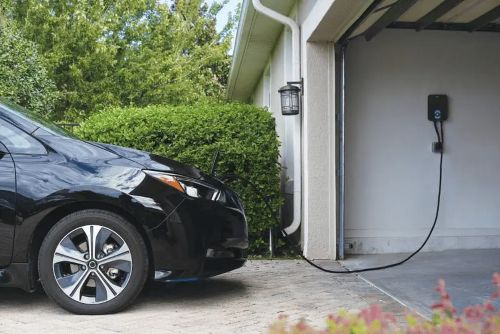


As electric vehicles (EVs) continue to gain popularity, the demand for reliable and safe EV charging infrastructure is growing exponentially.
As electric vehicles (EVs) become more popular, the demand for reliable and safe EV charging infrastructure grows rapidly. One critical factor for the longevity and safety of EV chargers is surge protection. Power surges—from lightning, grid fluctuations, or nearby electrical equipment—can seriously damage sensitive electronics, including EV chargers. So, do EV chargers need surge protection? The answer is a clear yes.
Surge protection involves installing devices called Surge Protection Devices (SPDs) that shield EV chargers from sudden voltage spikes. These spikes can originate from lightning strikes, power grid issues, or high-power appliances cycling on and off. Without surge protection, these surges can damage the charger’s internal components or disrupt its operation, causing costly repairs or replacements.
An SPD monitors voltage levels and safely diverts excess energy away from your charger, helping maintain safe, stable operation. Given the cost of modern EV chargers and their importance, protecting them from electrical surges is vital.
Imagine investing in a high-end EV charger at home only to have a lightning strike or power surge fry it along with your other electronics. Without surge protection, you’d face expensive replacements and inconvenience from being unable to charge your vehicle.
Surge protection helps prevent such damage, saving you money and hassle. It also safeguards your home’s electrical system and other connected devices, making it a smart investment.
There are three main types of SPDs to consider:
Type 1: Installed at the main electrical service entrance, Type 1 SPDs protect against large external surges like direct lightning strikes. These are essential for outdoor charging stations or areas prone to storms.
Type 2: The most common for homes and businesses, Type 2 SPDs protect against surges inside your electrical system—caused by appliances or grid fluctuations. These are installed at the distribution panel for secondary protection.
Type 3: Point-of-use devices installed near the EV charger for extra local protection against residual surges. They supplement but do not replace Type 1 or Type 2 devices.
Dual-layer protection is ideal for outdoor chargers: install Type 1 SPD at the main panel and Type 2 at the charger.
Follow local codes like the 2020 National Electric Code (NEC), which requires whole-home surge protection for new residential electrical services.
When upgrading your electrical panel for EV charging, include SPDs during the upgrade to avoid costly retrofits.
Always use a certified electrician experienced with EV systems for proper SPD installation and regular maintenance, as SPDs degrade over time.
While surge protection devices add some upfront cost, it’s minimal compared to the expense and inconvenience of replacing a damaged EV charger or other electronics. Plus, protecting your equipment means fewer interruptions and peace of mind.
With growing EV adoption and more chargers installed outdoors or in harsh environments, surge protection is increasingly important. Advances like smart SPDs that monitor and alert you in real-time are making surge protection more effective and affordable, future-proofing your charging setup.
Surge protection is essential—not optional—for EV chargers. It prevents costly damage, ensures safety, and keeps your EV charging reliable. Whether for home or business, installing the right SPDs and following best practices protects your investment and supports a smooth electric vehicle experience.Know more about Google SEO Directory
